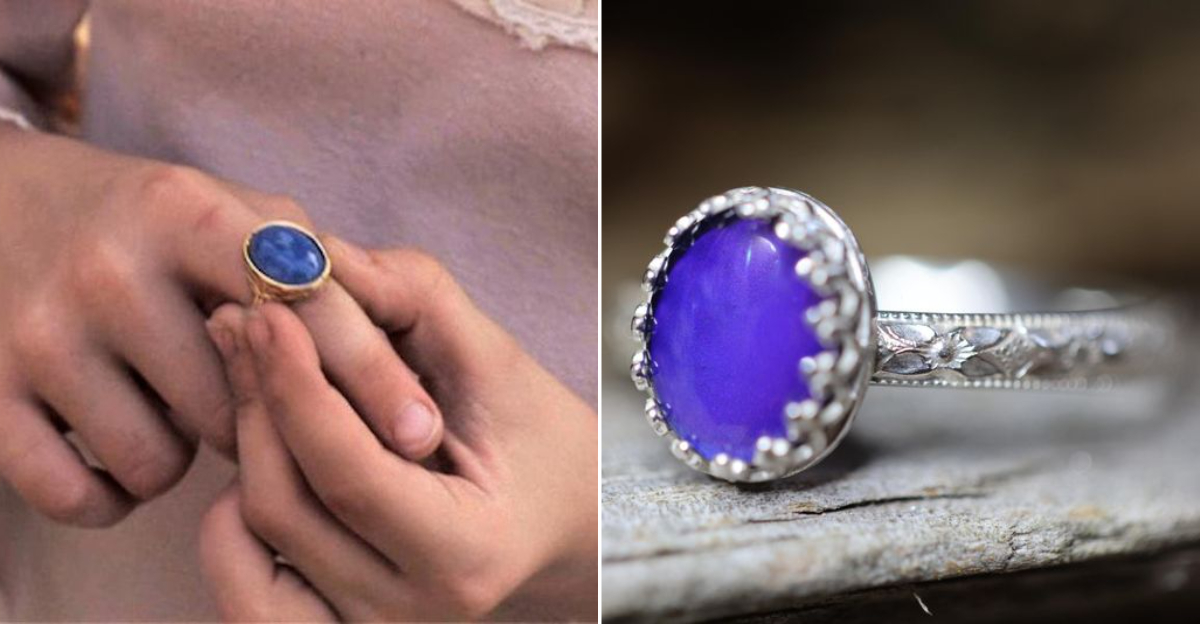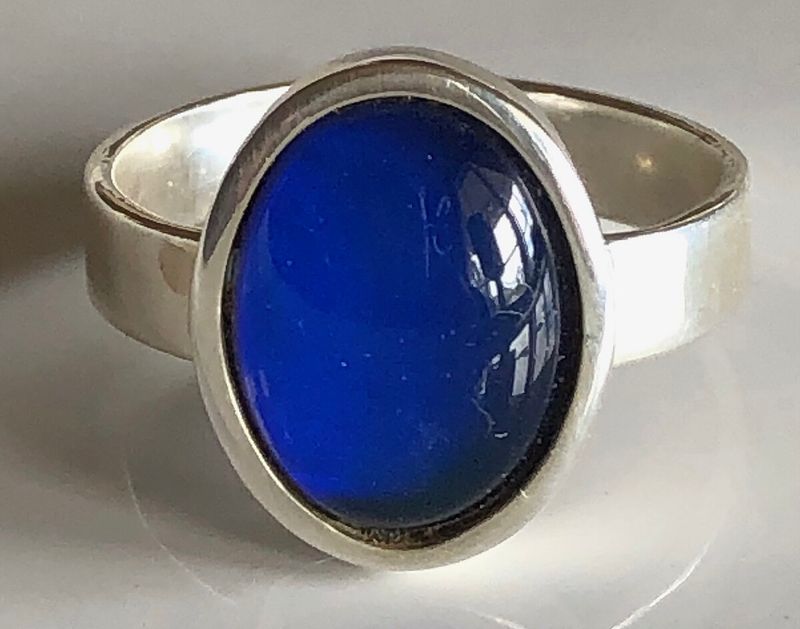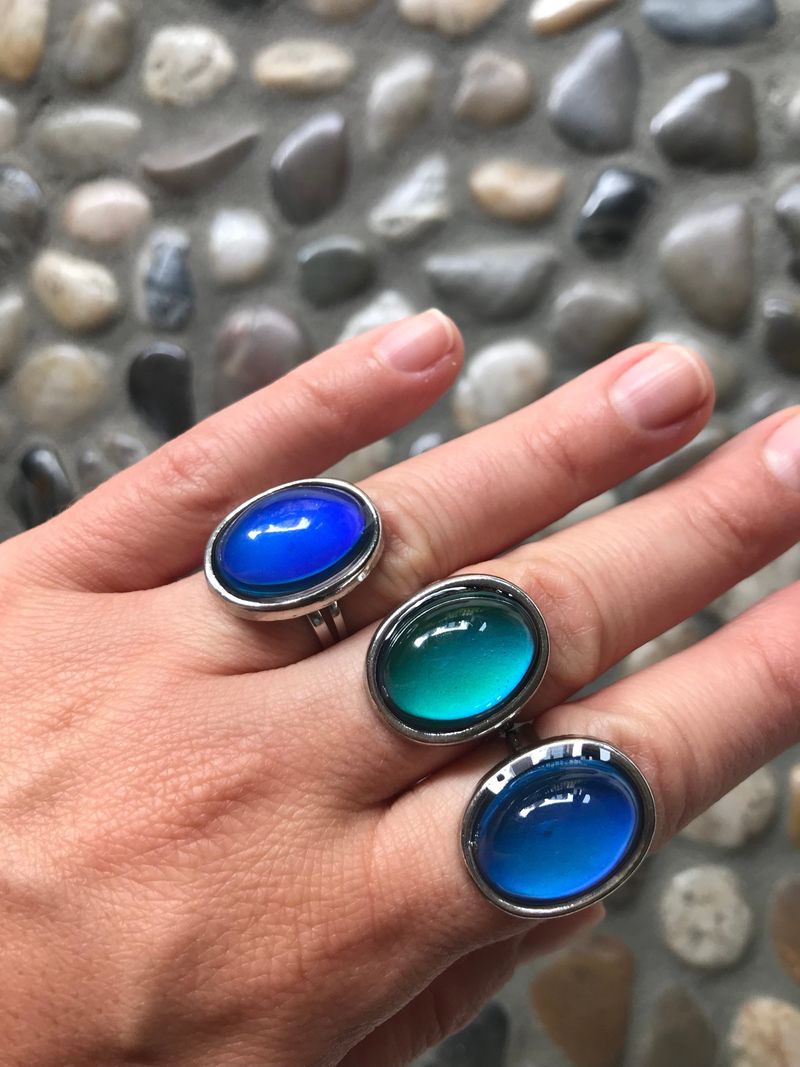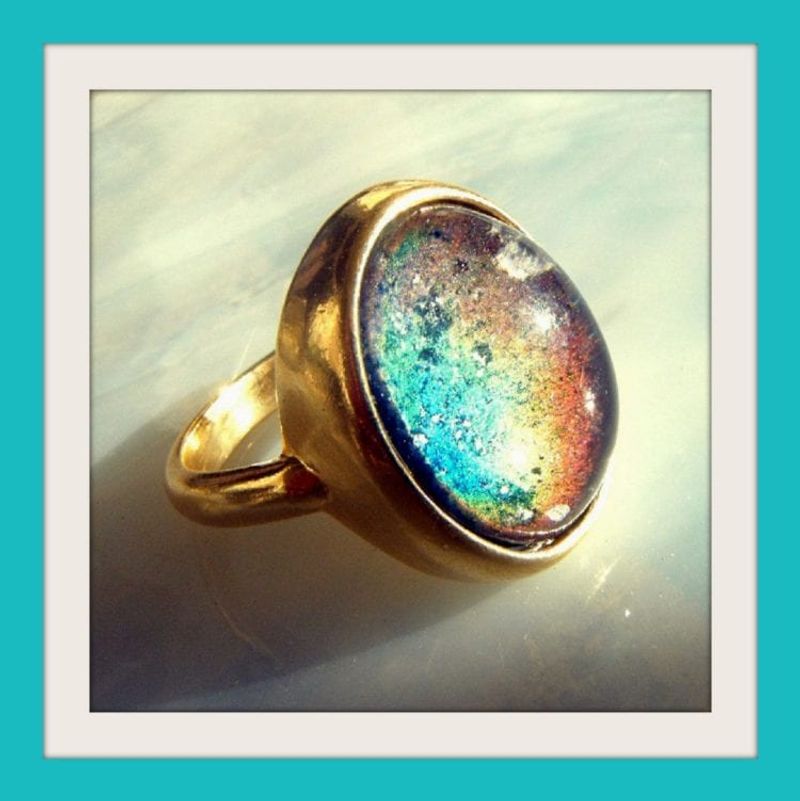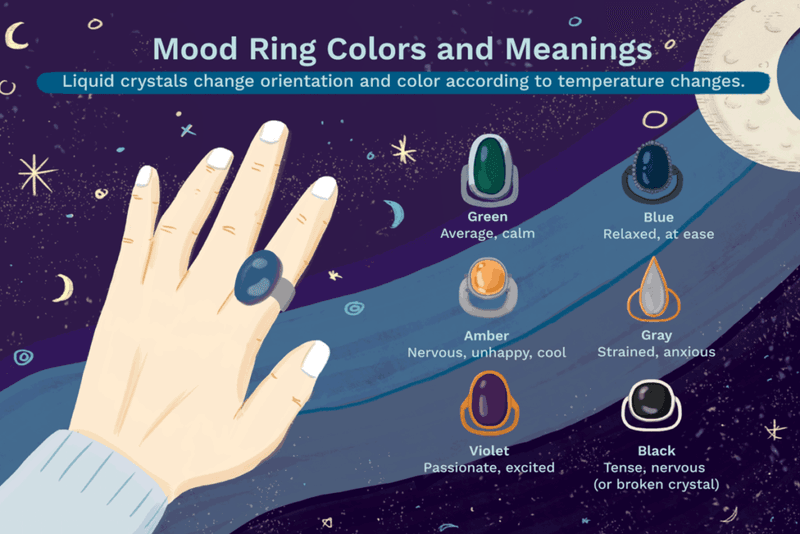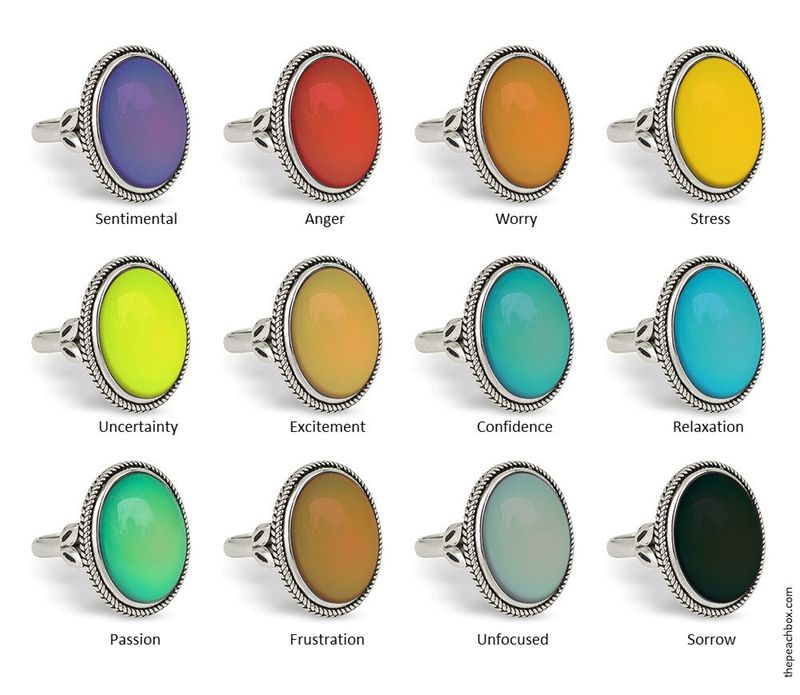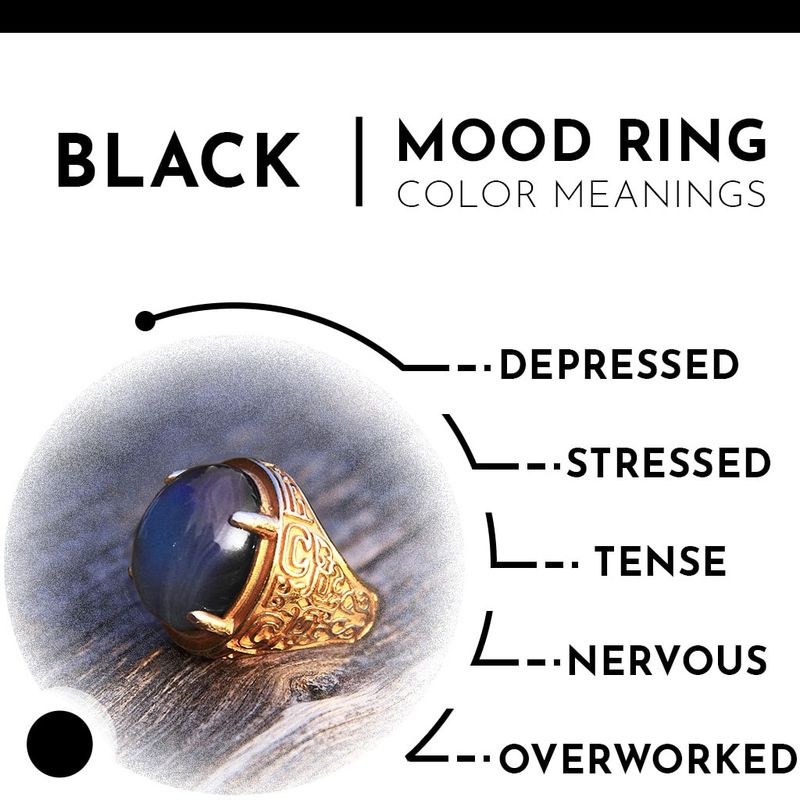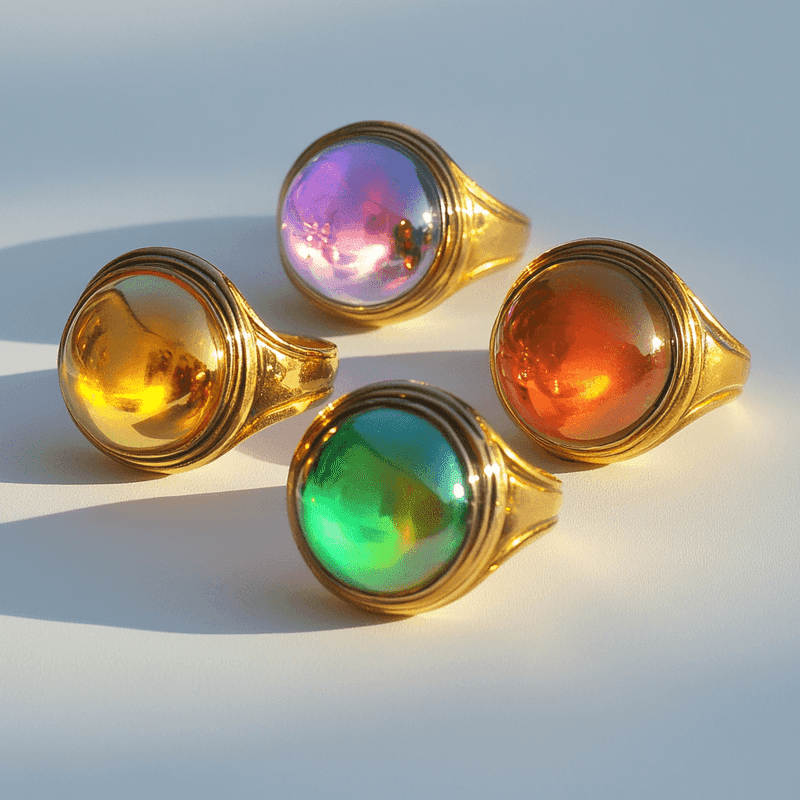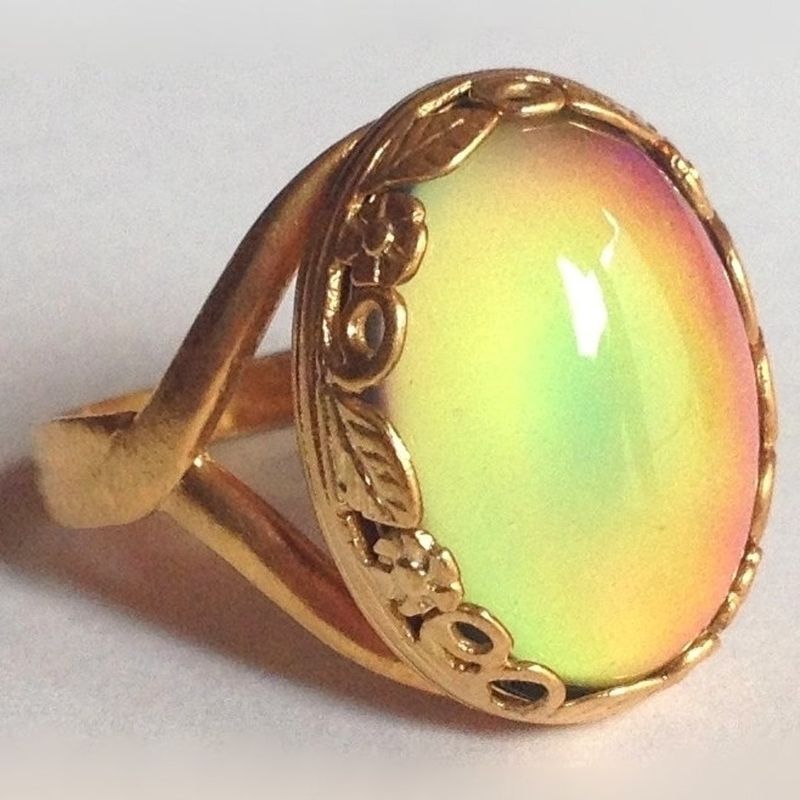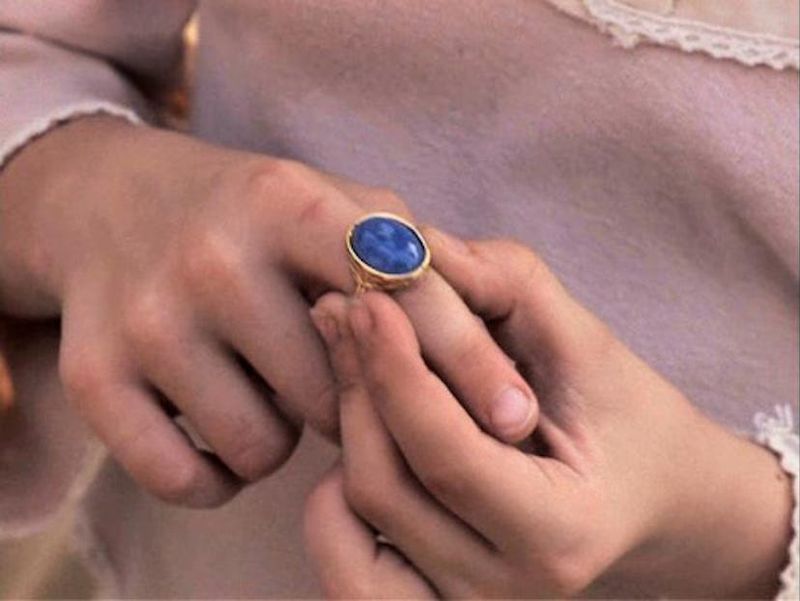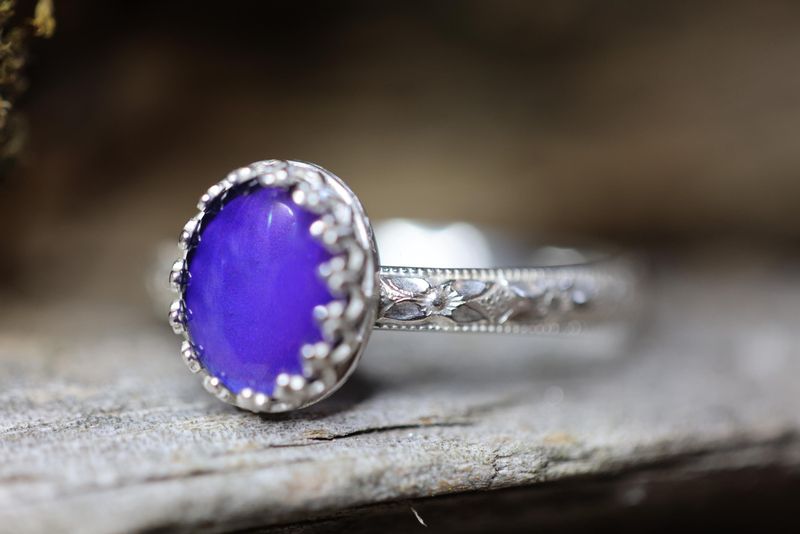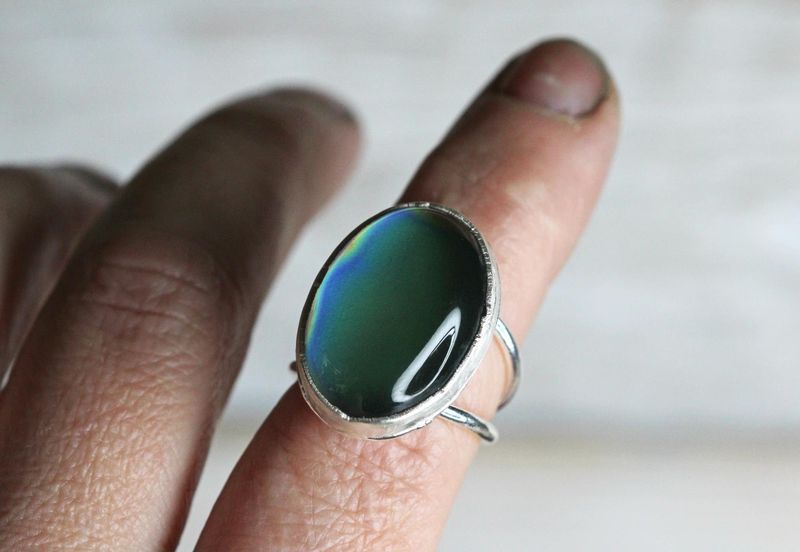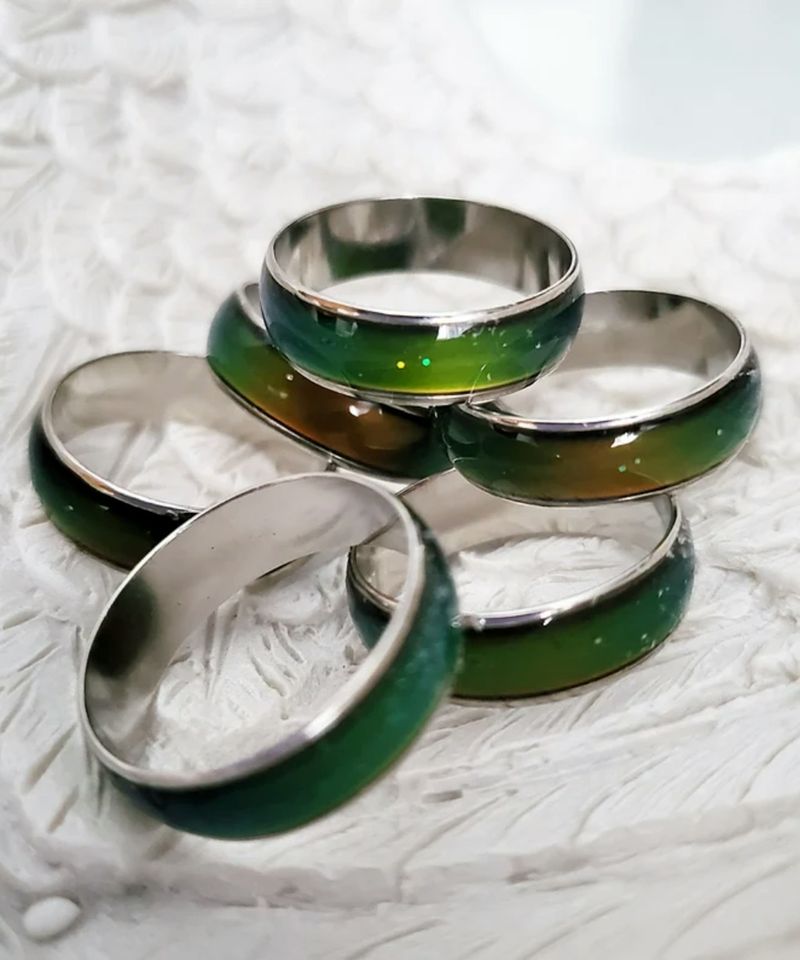Mood rings, a staple of 1970s fashion, captivated wearers with their ability to change color based on body temperature, promising to reflect the wearer’s emotions. These intriguing accessories were more than just jewelry; they were a cultural phenomenon, symbolizing the era’s fascination with self-expression and the mysteries of human emotions. This article dives into the world of mood rings, uncovering fascinating facts about their origin, popularity, and enduring legacy.
1. They Were Invented by Two New Yorkers in 1975
Mood rings were the brainchild of Joshua Reynolds and Maris Ambats, two innovative minds from New York City. In 1975, they combined liquid crystal technology with jewelry design to create this iconic piece of wearable tech. The rings promised to reveal the wearer’s emotional state through color changes in response to body heat. This fusion of science and style captured the imagination of many, quickly becoming a sensation. With their sleek design and captivating functionality, mood rings became a symbol of the 1970s’ experimental spirit.
2. They Sold Out Within Hours
The excitement for mood rings was palpable when they first hit the shelves. Stores sold out within hours, as people lined up to claim their piece of this fascinating new trend. The rings appealed to a wide audience, from curious teens to fashion-forward adults, all eager to own a personal mood detector. This frenzy was a testament to the rings’ allure and the public’s fascination with self-discovery during the era. The instant success of mood rings marked them as a defining fashion moment of the 1970s.
3. They Were Marketed as “Personal Biofeedback” Tools
Mood rings were cleverly marketed as more than just jewelry. Advertisements touted them as “personal biofeedback” tools, claiming they could provide insights into one’s emotional and physical states. This marketing strategy tapped into the growing interest in self-awareness and personal wellness of the time. Though the science behind the claims was dubious, the allure of understanding one’s moods drew many to these mystical accessories. The promise of mood rings, to decode the mysteries of one’s emotions, resonated with the self-explorative spirit of the 1970s.
4. The Colors Were Based on Temperature, Not Magic
Despite the magical aura surrounding mood rings, their color-changing properties were rooted in science. The liquid crystals inside the ring responded to temperature changes, altering the color based on the wearer’s skin temperature. This scientific explanation didn’t deter the mystical interpretations, as people were keen to associate colors with emotions. Blue indicated calmness, while green signified relaxation. The apparent accuracy in reflecting emotions, though based on temperature, kept the allure and mystery alive. Mood rings became a whimsical blend of science and fantasy.
5. Each Color Had a Supposed Meaning
Every shade on a mood ring was believed to have a specific emotional interpretation. For instance, blue was thought to represent calm, green suggested relaxation, and yellow hinted at nervousness. Black, however, was often linked to stress or unease, making it the least favored color. These interpretations added a layer of depth and intrigue, turning mood rings into more than just a fashion accessory. They became personal guides, allowing individuals to explore and reflect on their emotional states, even if the science was more about heat than heart.
6. Black Was Everyone’s Least Favorite Color
In the spectrum of mood ring colors, black was universally unpopular. It was associated with negative emotions like stress, sadness, or even danger. Seeing black could dampen the mood, contradicting the ring’s purpose. Despite this, the color black added complexity to the narrative of mood rings. It reminded wearers that emotions are multifaceted, not always happy or bright. This dimension of emotional authenticity contributed to the continued fascination with mood rings, despite their simplistic basis in temperature changes.
7. They Became a Full-On Fashion Craze
Mood rings transcended their initial purpose, sparking a full-blown fashion craze. They inspired a whole range of mood-themed jewelry, from pendants to earrings, even belt buckles. This expansion was fueled by the rings’ popularity and the desire for personal expression through accessories. Mood rings and their counterparts adorned many in the ’70s, becoming symbols of individuality and style. Their enduring appeal lay in this ability to combine personal expression with a touch of mystique, making them timeless fashion statements.
8. Some Cost as Much as $250 at the Peak of the Trend
While many mood rings were affordable, some reached luxury status, costing up to $250. These high-end versions were crafted from gold or sterling silver, appealing to those seeking a touch of elegance and exclusivity. The price tag reflected the cultural and fashion significance attached to mood rings during their peak. Owning a premium mood ring became a statement of sophistication, elevating the simple concept into a luxury item. This blend of fashion and perceived emotional insight captivated a diverse audience, from trendsetters to collectors.
9. They Were a Favorite Among Teenagers and Celebs Alike
Mood rings captivated not only teenagers but also celebrities, becoming a trendy icon in Hollywood. From school hallways to movie sets, they were a must-have accessory. The rings’ ability to ‘read’ emotions intrigued stars, adding an element of personal insight to their public personas. This crossover into the celebrity world amplified the rings’ allure, making them desirable beyond the typical fashion trends. As both a style statement and a personal emblem, mood rings bridged social statuses, uniting fans across the spectrum.
10. They Were Often Given as Friendship or Love Tokens
Mood rings transcended fashion, becoming symbols of friendship and love. Exchanging rings was a gesture of affection, with colors believed to reflect the emotional bond shared. If a ring stayed blue when with someone special, it was seen as a sign of harmony. This romantic narrative added charm, making mood rings ideal gifts for partners or friends. Their ability to symbolize connection, despite the scientific simplicity, gave mood rings a special place in the hearts of many, creating memories as colorful as the rings themselves.
11. They Faded—Literally and Figuratively—By the ’80s
As the vibrant 1970s gave way to the ’80s, mood rings began to fade, both in popularity and appearance. Many rings lost their luster or stopped working, mirroring the decline of the trend. The fleeting nature of mood rings symbolized the ephemeral nature of fads, leaving behind fond memories for those who wore them. Despite their decline, the nostalgia for mood rings continued, with their story serving as a reminder of a whimsical era. They became relics of a time when emotions could be worn as colorful jewels.
12. They’ve Made a Quiet Comeback in Recent Years
Mood rings have recently reemerged, fueled by nostalgia and retro fashion trends. Gen Z and millennials, drawn to vintage styles, have rediscovered them as quirky accessories. Online platforms like Etsy now feature a variety of mood ring designs, blending classic aesthetics with modern twists. This quiet comeback highlights the timeless appeal of mood rings and their ability to adapt to new generations. Whether as a nostalgic nod or a unique fashion statement, mood rings continue to captivate, proving that some trends never truly fade away.
